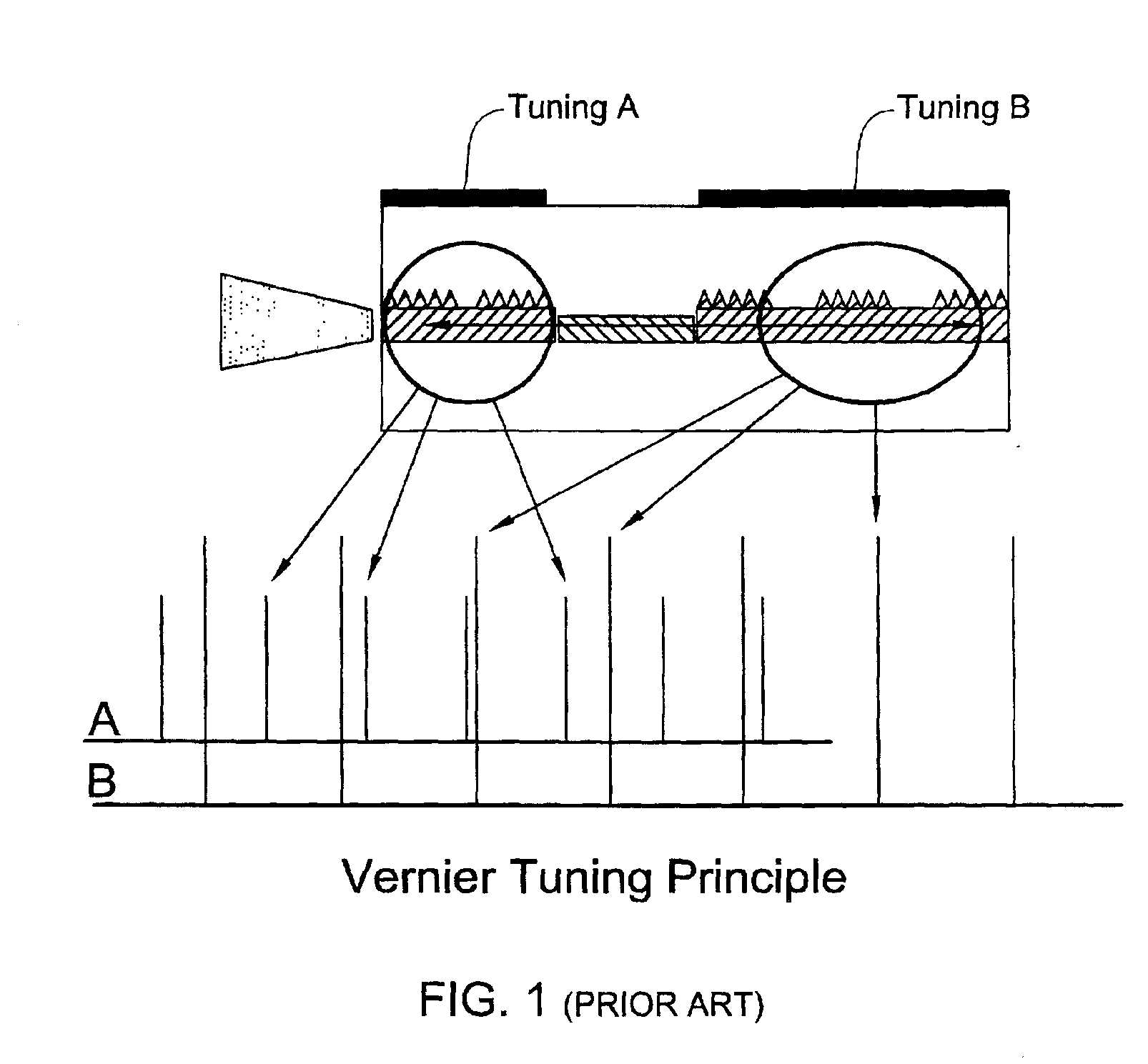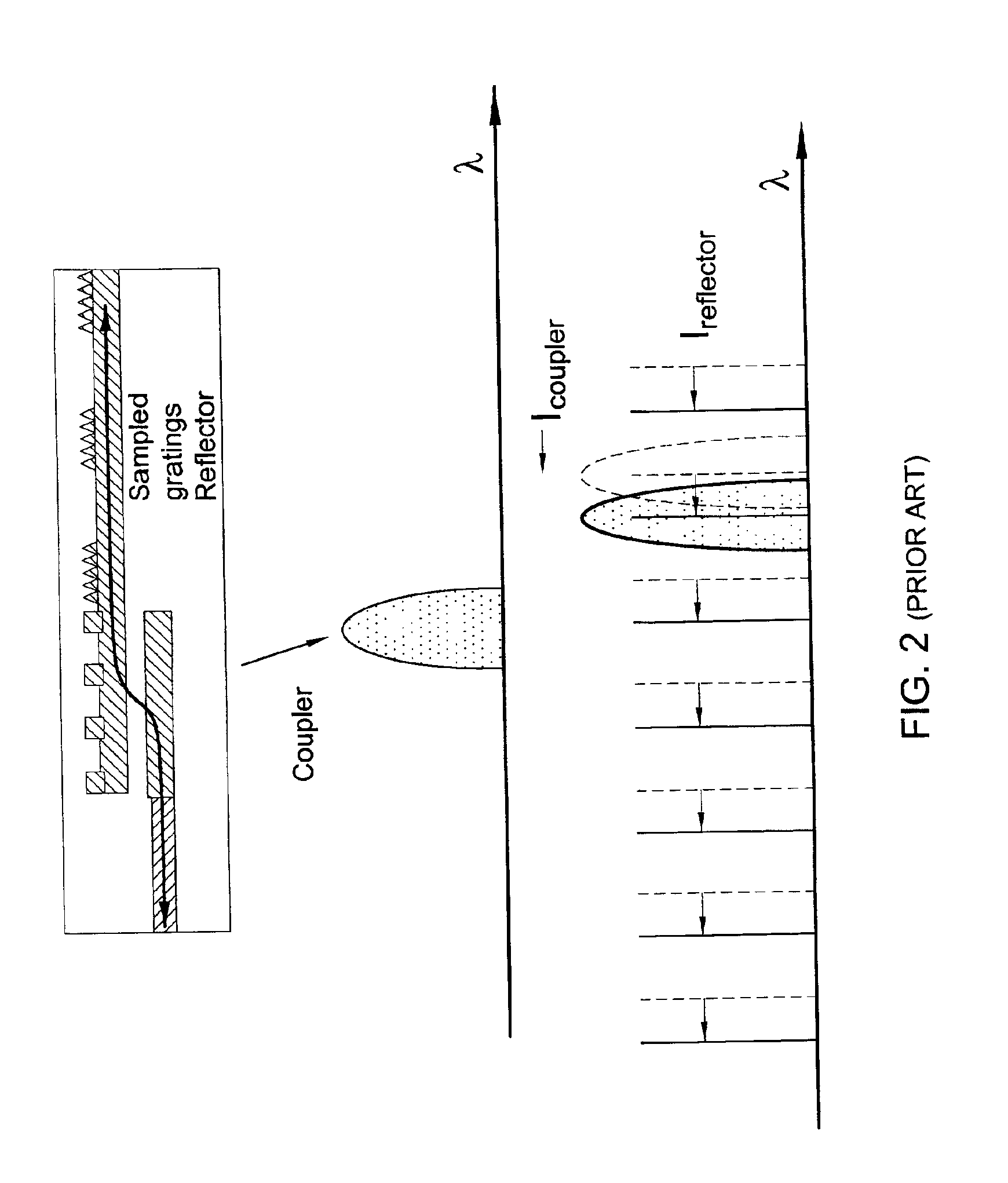Tunable laser using microring resonator
a micro-ring resonator and laser technology, applied in the direction of laser details, laser optical resonator construction, optical resonator shape and construction, etc., can solve the problems of adverse effects on yield and pri
- Summary
- Abstract
- Description
- Claims
- Application Information
AI Technical Summary
Benefits of technology
Problems solved by technology
Method used
Image
Examples
Embodiment Construction
[0026]FIGS. 1 and 2 show prior art laser devices lasers of the kind utilizing the monolithical solution (based on a DBR). Laser structures according to the invention utilize microring resonators instead of at least superstructure or sampled gratings. The lasers can be fabricated by an epitaxial growth on InP, or other materials. In the non-limiting examples presented below, the InP based lasers that dominate the optical communications lasers are emphasized. The active laser layer and waveguide is referred to as 1.55 layers (the material composition made to emit light at 1.55 micrometer). Other waveguide layers are denoted as a 1.3 layer and a 1.14 layer, both transparent to the laser wavelength. They are deposited by a process of epitaxial regrowth over the processed wafer.
[0027]Referring to FIGS. 3A and 3B, a laser structure according to one embodiment of the present invention is schematically illustrated. This configuration is generally similar to the prior art SGDBR or SSGDBR str...
PUM
 Login to View More
Login to View More Abstract
Description
Claims
Application Information
 Login to View More
Login to View More - R&D
- Intellectual Property
- Life Sciences
- Materials
- Tech Scout
- Unparalleled Data Quality
- Higher Quality Content
- 60% Fewer Hallucinations
Browse by: Latest US Patents, China's latest patents, Technical Efficacy Thesaurus, Application Domain, Technology Topic, Popular Technical Reports.
© 2025 PatSnap. All rights reserved.Legal|Privacy policy|Modern Slavery Act Transparency Statement|Sitemap|About US| Contact US: help@patsnap.com



